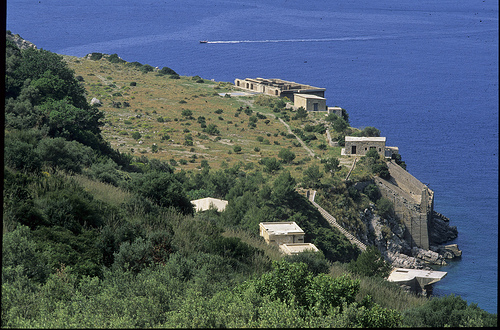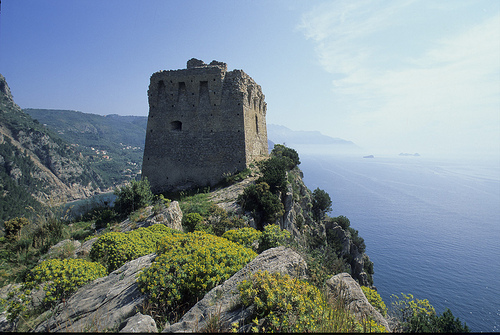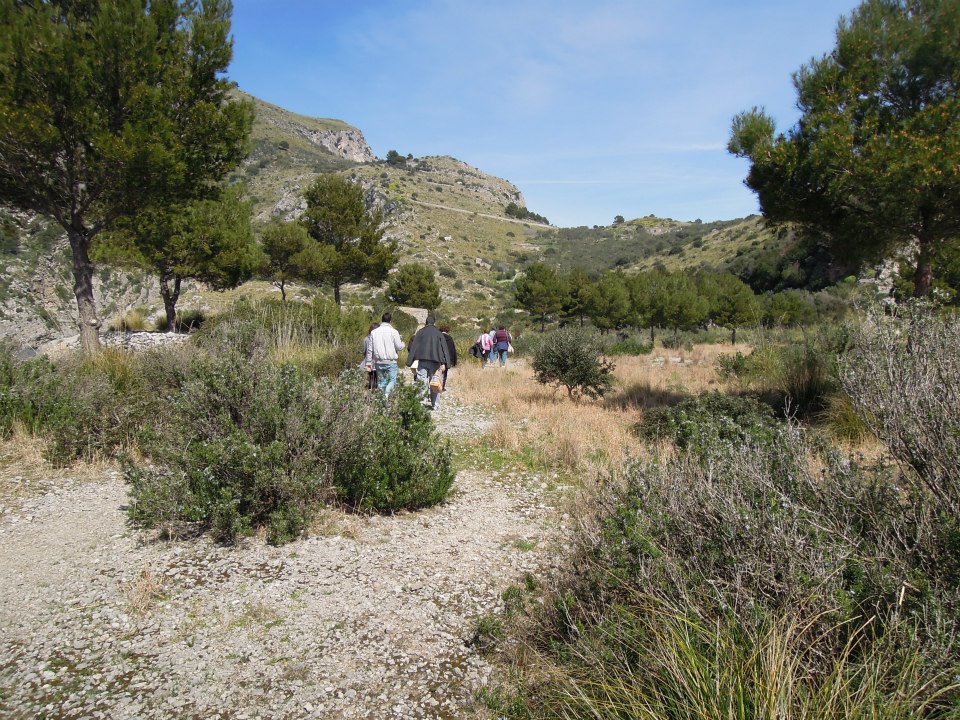
Area naturale baia di Ieranto
This post is also available in:
 Italiano (Italian)
Italiano (Italian)
The Ieranto Bay Natural Area is an inlet of the gulf of Naples and it is part of the municipality of Massa Lubrense. It is located inside the protected area of Punta Campanella and it occupies a surface of 63 ha, of which nearly 50 belong to Fondo Ambiente Italiano since 1986. It is divided into two parts: the rocky and steep side which ends at Punta Campanella, and the Promontory part with degrading slopes, which covers the area from the peak of Montalto till the open sea at South-West with Punta Penna. It is used for the extraction of calcareous rocks, the bay is characterised by the presence of rustic architectures (colonial houses, terracing to cultivate olive trees) and structures dedicated to the extracting activities (hoppers, engines, workshops, armoury, basins and magazines).
FAUNA AND FLORA
Ieranto marine and terrestrial fauna includes more than 100 species ornithological, which have been the object of a census, easily spotted, while mammals are more difficult to notice; to this category belong tens of foxes and martens, reptiles and the sea turtle Caretta caretta.
The flora is mainly spontaneous and belong to the Mediterranean scrub. It is formed by lentiscus (Pistacia lentiscus), broom trees (Spartium junceum), red valerian (Centranthus ruber). Among the arboreal species, there are carob trees (Ceratonia siliqua), Rhamnus alaternus, pines and oaks associated to an undergrowth of cyclamens (Cyclamen hederifolium), Rubia peregrina, wild asparaguses (Asparagus temifolius) and Arum italicum.
The Mediterranean scrub becomes scrubland in the sunny areas, because of the presence of xerophilous plants; among the spontaneous aromatic species, used also to cook, there are Rosmarinus officinalis, Foeniculum vulgare and Capparis ovata.
The Ieranto bay is particularly interesting for oceanography, since it is the point where the waters of the Gulf of Naples and Salerno unite. This position is privileged and makes it possible to have a huge variety of flora and marine fauna deriving from the continuous arrival of nourishing elements in the upper layers. Among the leaves of Posidonia oceanica, it is possible to find young specimens of many fish species, which live once they have reached adulthood in sandy, muddy seabed and in the vicinity of cliffs.
THE PATHS
It is possible to follow a path starting in the fraction of Nerano to reach the bay and beach. It is 3.5 Km long and it develops between dry stone walls, olive trees and the Mediterranean scrub offering a magnificent view of the Ieranto bay, Capri and the Amalfi coast.
This post is also available in:
 Italiano (Italian)
Italiano (Italian)
Contatti
Massa Lubrense(NA)
335 8410253
faiieranto@fondoambiente.it
Altre info
Ingresso gratuito; visita guidata su prenotazione della durata di 2 ore



